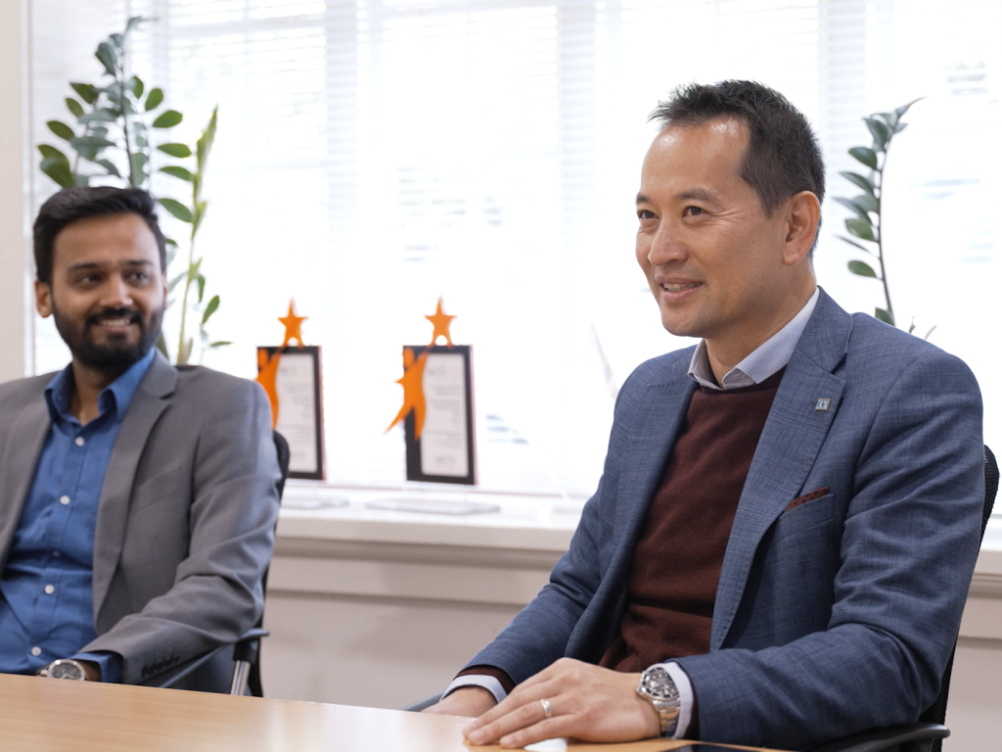What is digital transformation?
What benefits does digital transformation deliver?
While the specific outcomes of each digital transformation will vary based on the unique position of each organisation, the benefits can be grouped into four broad categories:
Additional value delivery
01
The organisation can offer new or improved products and services, which were not possible with the previous technologies and operating model of the organisation.
Increased efficiency
02
Outcomes are achieved faster, with less effort and cost, alongside the workforce being redirected from lower value tasks like data re-entry to higher value activities like customer service, team collaboration, and innovation.
Improved experiences
03
The customers and the workforce find it quicker, easier, and more convenient to interact with the organisation’s technology and processes. There are also new ways of working and engaging with the organisation that were not previously possible.
Organisational agility
04
Using all of the above, the organisation can remain competitive through ongoing innovation, adaptation, growth, and rapid response to disruption.
Additional value delivery
01
Increased efficiency
02
Improved experiences
03
Organisational agility
04
Important practices that enable digital transformation
While it’s introducing technology that provides many benefits of digital transformation, the additional practices are also very important, as they make an important contribution to selecting, delivering, and embedding these technologies into the organisation. The practices also support the many non-technical changes for people and processes, which required to adapt and improve the organisation through the transformation.
As these practices are used when delivering many other types of solutions, such as Customer Experience and Intelligent Automation, we sometimes refer to them as Shared Practices.

Which technologies enable digital transformation?
While it’s true that digital transformation is strongly driven by changing the culture and operating model of the organisation, the growth in what has become possible is driven by technology options that continue to emerge and evolve over time. Exactly which technologies an organisation should adopt will depend on their circumstances, but many of the Shared Practices will help to identify and sequence the best technologies for that organisation based on the challenges that resolve and the opportunities they provide. The list of technology types below are common to many digital transformations, as they extend the way in which an organisation can change and evolve.
Let’s help make your digital transformation a success
The team from Diversus bring their experience and expertise from helping many other organisations undergo their digital transformation. As well as helping to select and delivery technology, they can work alongside your own people to provide formal and informal knowledge transfer, further enhancing the development and competency of your own workforce.

Your people and partners are central to delivering the outcomes of digital transformation and retaining those ongoing capabilities. The changes to technology and the organisation’s culture and operations, require new skills and different ways of working.
Not what you're looking for?
Read about our other solutions to find one that best suits your needs.
Re-host, re-platform, re-purchase, or re-architect? Our specialists can assist with both the decision making and the execution of cloud migration and adopting new cloud capabilities.
Good customer experience creates smooth and efficient customer interactions, building a strong relationship by understanding what people need and value.
The industry-leading technologies of our cybersecurity partners are used by the world’s most trusted organisations to protect their reputation and compliance.
Data-driven organisations can make their decisions based on richer insights and better evidence. This is made possible through improvements across data collection, data engineering, effective governance, visualisation tools, and a broader capability with analytics and AI.
Intelligent automation improves the digitisation and process streamlining of process automation tools by using AI-based technology for complementary decision support, process discovery, and process insights. Adopting these tools as an organisational capability rather than a collection of tactical gap fillers will help an organisation deliver fully automated outcomes.
By selecting technologies that function effectively together with the specific aim of improving how their workforce can perform better, organisations gain features not available from their older and individually acquired workplace solutions. It’s essential that the solutions can be continually adapted and improved as the organisation evolves.






